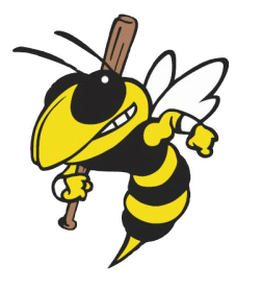
Posted on 01/21/2015 10:03:43 AM PST by SandRat
MCNEAL — Once it housed soldiers stationed at Fort Huachuca, then it was moved to McNeal and was filled with the sounds of happy feet dancing and the chattering of ladies at coffee cloches.
Now abandoned, there are new inhabitants that really are no fun — killer bees. The irritable, six-legged flying pollinators have been in the building on Frontier Road for a number of years, tending huge honeycombs and creating problems for those who walk their dogs, ride horses or just take a morning stroll.
If one puts out nectar for the hummingbirds and orioles in spring within the honey-makers three-mile radius of browsing, they swarm the feeders, making it impossible for the feathered fliers to grab even a sip of the life-giving sweetness.
Carl Hooper, county environmental health official, was unaware of the bee problem at the building until it was brought to his attention by neighbors in the area and Reed Booth, the Killer Bee Guy.
A trip to the forlorn building by vector chief Dan Bevy gave Hooper reason to sound the alarm and find the property owner. Bevy also found two entrances and lots of bee activity.
Hooper called the property owner Charles Currier, who lives in Washington state, and explained the situation. He passed along Booth’s number and information about his experience with the dangerous attack artists, which goes back many years.
In response to Currier’s call, Booth and Frank Smyth went to check out the situation last week. It did not start well.
First, Smyth fell through the floor of the addition built on the front of the building. Luckily, that area of the building had no bee hives and Smyth was unhurt, except for a few bruises.
Then, an owl made a ruckus due to the invasion of its sleeping quarters and flew out the door.
As the men walked around the building, the bees were coming and going. Not a lot of activity was going on due to the cooler temperatures. Cautiously, they checked the foundation of the building and found not two, but three separate hives. Bees were coming and going from all three.
“This could be a deadly situation,” Booth told Smyth, who nodded solemnly in agreement. “It’s an infestation.”
Bees like dark and enclosed spaces, like between walls or floors of a home or shed, or even RVs. Anywhere there is a one-eighth inch gap, bees can start up a hive, Booth said.
As Booth explained, the bees had set up housekeeping in the floor space which is about 18 inches to two feet in depth. It appeared that there were underpinnings separating the space into three chambers providing the perfect place for the three hives.
“If we start cutting through the floor to get to one hive, we risk disturbing the others and it’s gonna be crazy,” said Booth.
Yet that was what had to be done. The owner agreed to the removal of the hives and Booth, Smyth, along with Carl Hooper and Eric Servia, took to the task Tuesday morning.
A beehive of activity
Just as the sun was rising over the mountains, everybody was suited up with duct tape holding the legs of the suits to boots. Epi-pens and benedryl were at the ready. The task of sealing up all the entrance holes to keep the bees in the hives began.
“The only thing between us and the bees is a thin piece of rip-stop fabric,” explained Booth. “We wear bee keeper nets over our heads, long gloves and we make sure that there is no way they can get to our skin. So, you really have to protect yourself when you deal with this many angry bees.”
He told the group to let him know immediately if anyone got stung and mentioned that tingling lips could mean that an allergic reaction was pending.
“If that happens, we get in the truck and get to the hospital,” said Booth.
Getting down to bees-ness
Because it was barely above freezing when the first cuts into the floor were made, the bees were unable to fly much. Instead, they marched by the thousands across the floor and up the walls.
A silent prayer went up to the great god of duct tape.
On hand with cans of adhesive spray, Servia and Hooper sprayed the moving mass holding them in place.
Booth and Smyth carefully lifted an 18-inch square of the subfloor and there was the sweet gold. It was constructed in layers, each one around two- to-three inches thick and 12 to 18 inches in width and depth. A squirt of the adhesive kept the bees in place as the combs, some weighing in at over 30 pounds, went into one of two containers.
Booth uses the brood cells and old honey for his mead-making hobby, while the gooey gold gets turned into jars of honey and the many flavors of honey mustard sold under the Killer Bee Guy name.
Smyth explained that the bees make different sized cells in the combs. The smallest are for the female worker eggs. Just a bit larger are the cells for the male drones and then an even larger set of cells are for the queens.
So how do these tiny creatures keep from freezing to death? The honey in the cells of the combs keep them fed through the winter, Booth explained. They also gather around the hive and their body heat keeps the larvae, the queen and themselves alive. Still, those on the outside of the mass will die.
In one of the holes, the bees had gathered where the hive that now lay in bins used to be. Booth cupped his gloves and pulled up a few thousand bees to give Hooper an idea of what to expect.
“You can feel the vibration from them,” said Booth as he placed the perturbed insects in Hooper’s hands.
“Wow. That’s something,” Hooper replied without a trace of fear or anxiety as he held more than enough bees to kill him.
Booth told him, “The sting of 500 bees equals the toxicity of one rattlesnake bite. So, you are holding the equivalent of several rattlesnakes.”
By the time they were finished, the sun’s warmth was working the colonies into a frenzy.
They hovered over the combs and were scrambling all over Booth, who seemed to find great joy in jumping down into the black holes filled with bees to check out the size of the hives and what needed harvesting.
Within three hours, all three hives had been cleared and boxed. Booth estimated that he would get over 100 pounds of honey for the morning’s work.
“Not a bad day,” Booth told his crew with a big smile. “Everyone got out alive and we have a lot of honey to process and mead to be made.”
Bees make more than honey
Bees produce a compound called propolis from the sap of evergreens. When they combine the sap with their own discharges and beeswax, they create the sticky greenish-brown substance that is used as a coating for their hives.
Propolis is a resin-like material rarely available in its pure form. It is usually obtained from beehives and contains bee products.It has a long history of medicinal use, dating back to 350 B.C., the time of Aristotle. Greeks have used propolis for abscesses; Assyrians have used it for healing wounds and tumors; and Egyptians have used it for mummification.
WebMD
Link?
Totally cool! He must have had some rush from that find.
I might look up his mead.
Thanks so much for sharing this :)

So has anyone tried killer mead?
"I got some honey. What's she worth to you?"

There is a corollary to dangerous women.
“Within three hours, all three hives had been cleared and boxed.”
What did I miss? Are the bees killed? Or are they released somewhere else?
If indeed they are African “killer bees” one has to be very careful. They tend to swarm and attack much more than native bees or the “Italian” bees used by most beekeepers.
Have a friend, whose father in Brazil is an amateur beekeeper - keeping African bees. The next-door neighbor’s stud bull wandered close to his hives - and was swarmed and stung to death. Now they are arguing over compensation!
What happens to the bees?
Do they kill them off? Let them swarm away and infest someone else?
Some years ago I owned a house that had on the property a huge, old tree. Sometime in the past it had developed a huge hole deep into the truck. Honey bees had found it and built an enormous hive. They were very aggressive. Sometimes when I mowed the lawn a regiment would come flying out and chase me across the yard, stinging. Got really bad — couldn’t use the yard. One winter I cemented the hole/hive with about 50 pounds of cement. Even in the cold, some sentries came out to check on me but they could hardly move. Tree surgeon estimated that there was several hundred pounds of honey in the tree but no way to get to it.
Released somewhere else.
Taken somewhere else
What a piss-poorly written article.
1. Where does this article originate from?
2. The article stated: “This could be a deadly situation,” Booth told Smyth, who nodded solemnly in agreement. “It’s an infestation.” What happened to the killer bees after the honey was taken?
3. Was anything done to stop the infestation?
Contact Reed Booth, the Killer Bee Guy. I know no more.
Not to mention it’s coffee klatsch. A CLOCHE is a hat.
*sigh*
Disclaimer: Opinions posted on Free Republic are those of the individual posters and do not necessarily represent the opinion of Free Republic or its management. All materials posted herein are protected by copyright law and the exemption for fair use of copyrighted works.